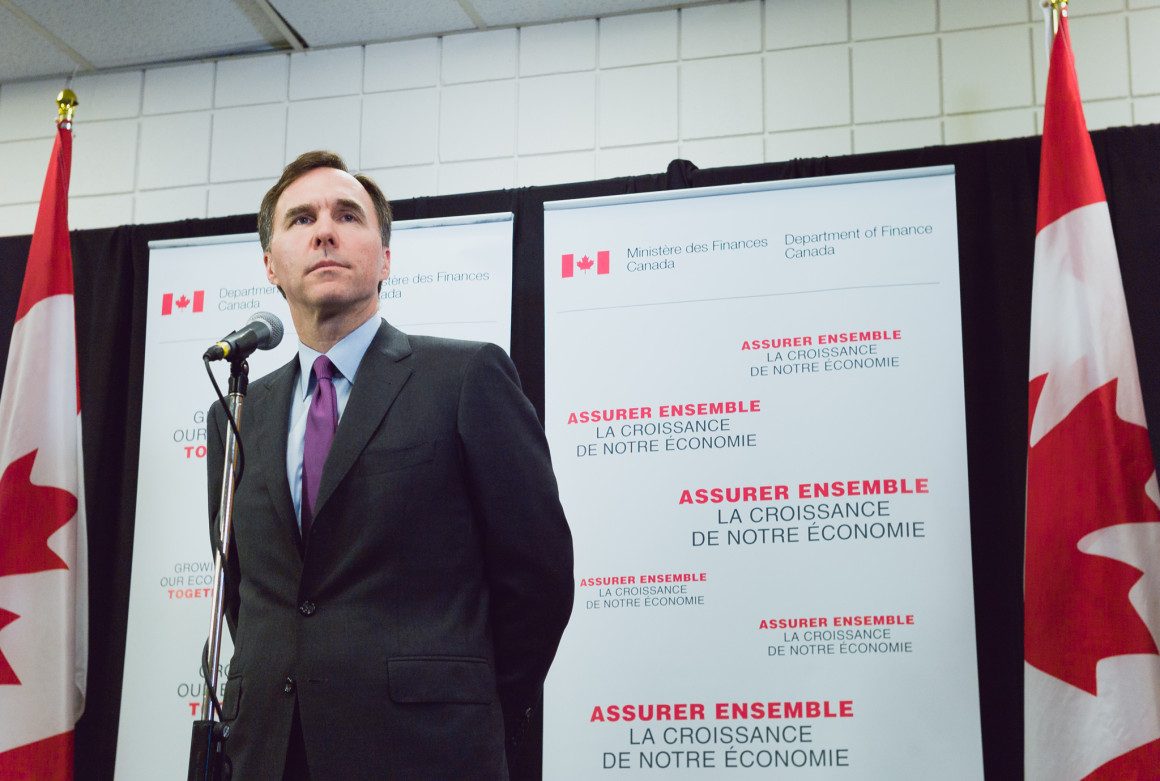
Four ways the federal budget will impact students
By Scott Strasser and Tina Shaygan, March 28 2017 —
The Canadian federal government tabled its 2017–18 budget on March 22. The budget was presented to the House of Commons by Finance Minister Bill Morneau. It is the second federal budget since Prime Minister Justin Trudeau’s Liberal Party took power in 2015 and includes a $23-billion deficit.
While the budget will undoubtedly effect Canadians in various ways, here are four ways it specifically impacts post-secondary students.
Research professorships and funding:

The university has confirmed they will pursue further CRC holders // Photo by Louie Villanueva
The government plans to invest $117.6 million over eight years to create 150 new Canada Research Chairs in order to attract high-level international talent to Canadian universities. Created in 2000, the CRC program has since spurred thousands of research professorships.
There are currently 67 allocated CRC positions at the U of C, 55 of which are filled. The university has confirmed they will pursue further CRC holders.
“When we get more details from the government about the parameters for the new 150th anniversary Canada Research Chairs, we will pursue opportunities for the university,” U of C vice-president research Ed McAuley said in a statement.
For the first time in many years, there was no explicit mention in the budget of Canada’s three federal research granting councils — Canadian Institutes of Health Research (CIHR), the Natural Sciences and Engineering Research Council (NSERC) and the Social Sciences and Humanities Research Council (SSHRC).
These three agencies are collectively known as the Tri-Council. Their omission from the budget may just mean that Tri-Council funding will remain relatively unchanged compared to last year, meaning funding for NSERC remains at roughly $848 million, funding for the CIHR remains at $773 million and SSHRC funding remains at $547 million.
These three agencies supply funding to graduate students as well as large-scale university research projects. At the U of C, Tri-Council funding accounted for $62 million in research funding in 2015–16 and hundreds of thousands of dollars annually in graduate student scholarships and bursaries.

The budget emphasized expanding loan eligibility for part-time post-secondary students // Photo by Justin Quaintance
Loan and grant eligibility:
The budget emphasized expanding loan eligibility for part-time post-secondary students, as well as expanding opportunities for mature students who support families and dependents.
The government will invest $59.8 million over four years towards the Canada Student Loans Program starting in 2017–18 and $17 million per year afterwards. They claim the funding will make 10,000 more part-time students eligible for student loans.
The government will also invest $287.2 million over three years in a pilot program to experiment with different approaches to assist adult learners in qualifying for Canada Student Loans and Grants. The pilot project is set to begin in 2018–19.
The budget will invest $107.4 million over four years — and $29.3 million per year after that — to expand loan and grants eligibility for students with dependent children. The government claims that this investment will benefit over 13,000 students across the country.

The tax credit was implemented in July 2006 to encourage public transit use // Photo by Prince Afrim
Elimination of the public transit tax credit:
The government will phase out a 15 per cent tax credit for public transit use this July. Students will no longer be able to claim the cost of monthly or annual transit passes on their income taxes.
The tax credit was implemented in July 2006 to encourage public transit use. The non-refundable credit allowed transit users to have 15 per cent of their transit fees deducted from the income tax they owed.
If U of C students claim the annual cost of the UPass on their taxes — currently $130 per semester for two semesters — this means they can no longer receive a credit of $39.59 per year. If U of C students also study in the spring and summer and claim the cost of the UPass for those months, this adds another $19.79 they no longer qualify for.
Increased financial support for indigenous students:
While the Liberal Party failed to live up to this campaign promise in 2016, the government kept its word this year and broke the two per cent cap on funding increases to the Post-Secondary Student Support Program (PSSSP) — a program that provides financial assistance to indigenous students.
The budget will commit $45 million a year for two years to the PSSSP beginning in 2017–18. Though they campaigned in 2015 on supplying $50 million a year to the program, the government claims the $90-million investment will benefit about 4,600 indigenous students in the country.

According to the U of C Native Centre, 84 per cent of students with Indian status received third-party funding this year // Photo by Louie Villanueva
This year, there were 675 indigenous students enrolled at the U of C — a 17.4 per cent increase from 2015–16. According to the U of C Native Centre, 84 per cent of students with Indian status received third-party funding this year.
The government’s plan to address barriers faced by indigenous students attending post-secondary also includes a review all federal programs that support indigenous post-secondary students.
